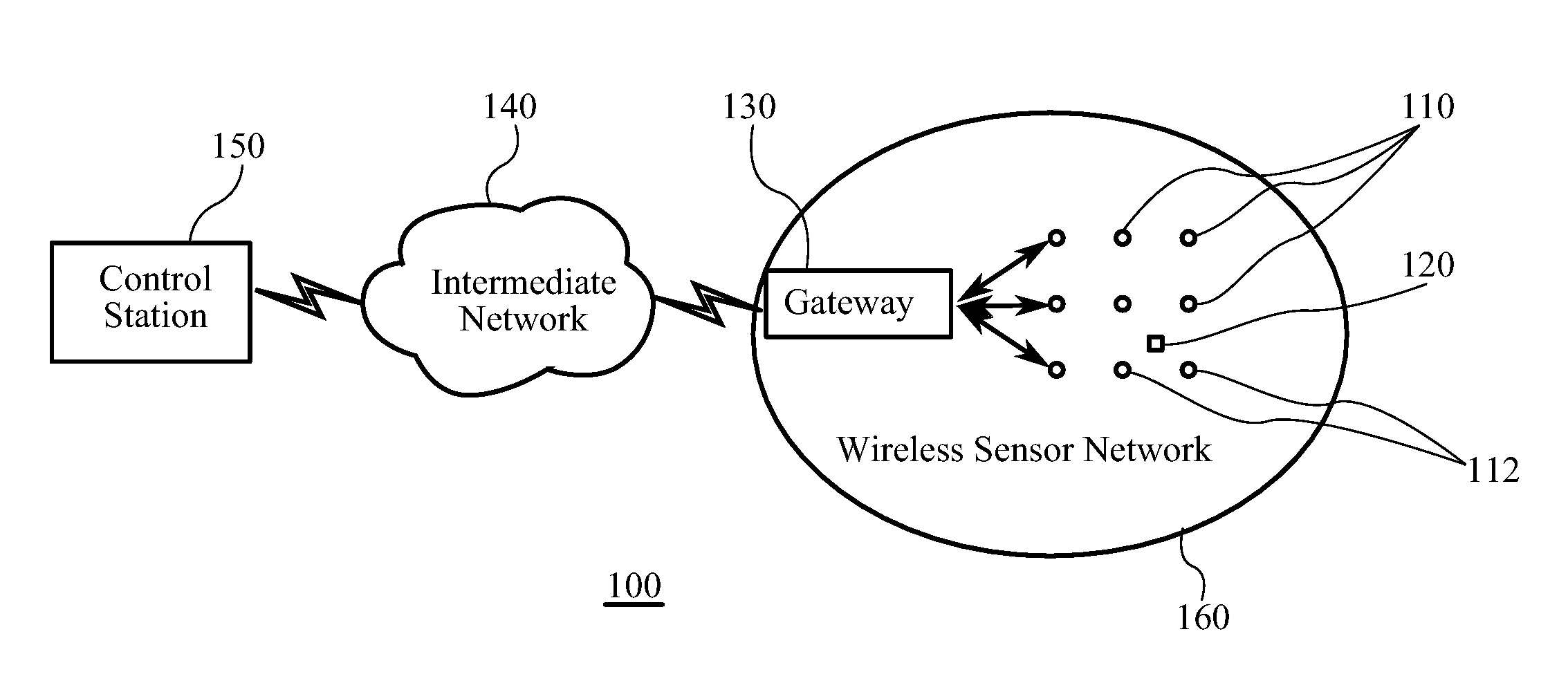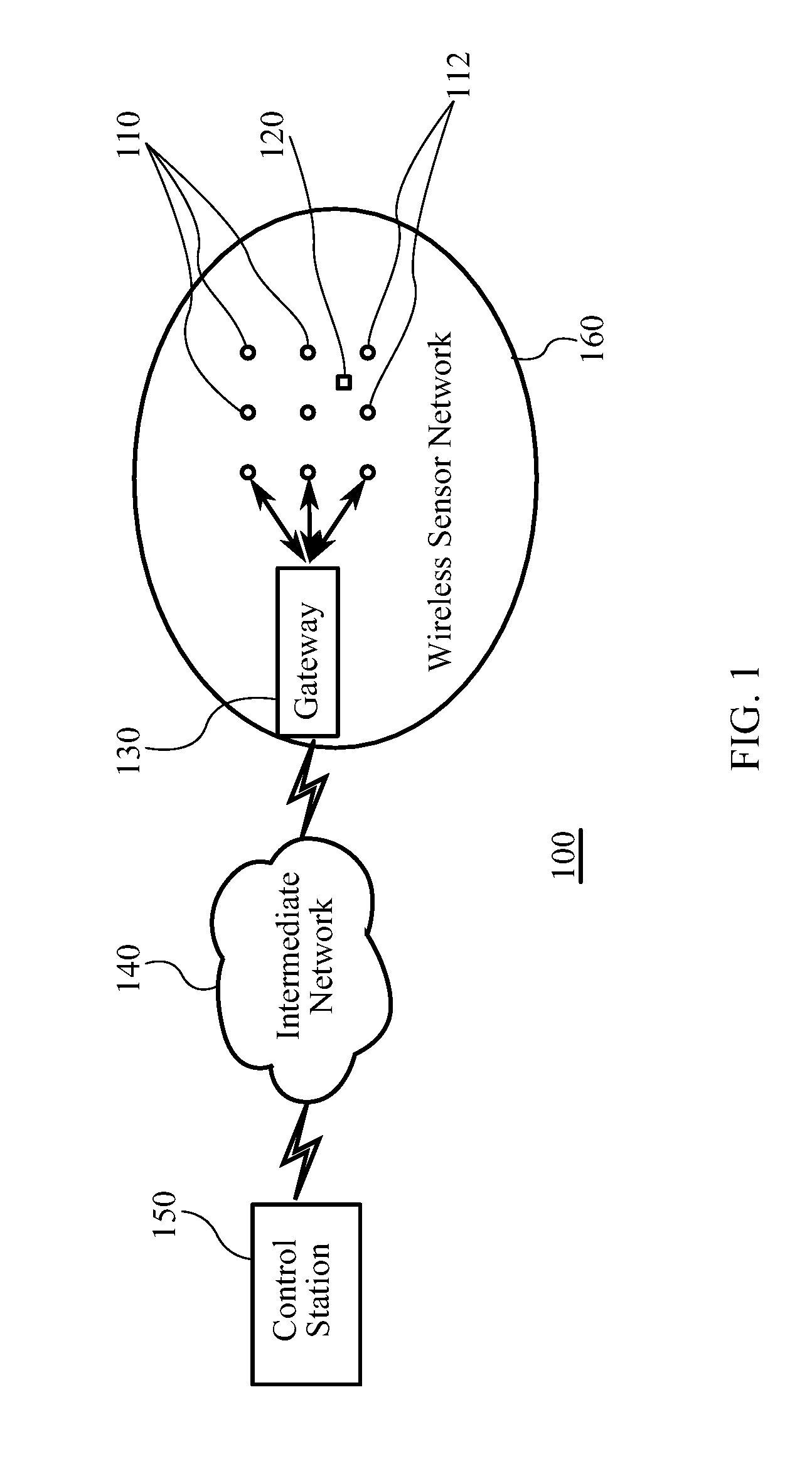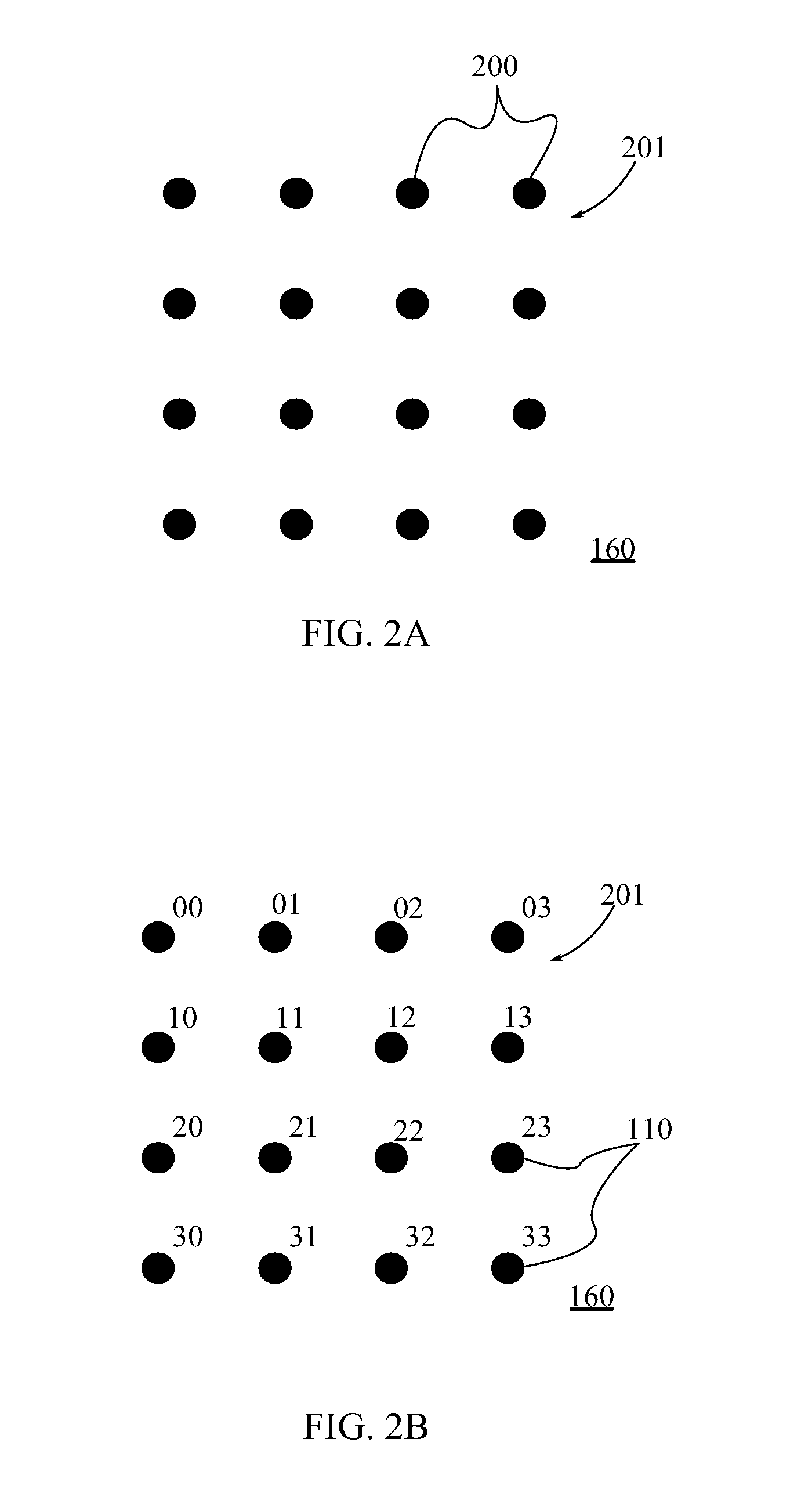System and method for self-calibrating, self-organizing and localizing sensors in wireless sensor networks
a wireless sensor and self-organization technology, applied in the field of wireless sensor networks, can solve the problems of gnss-based localization systems that are typically expensive to deploy, devices employing gnss technology are relatively expensive, and gnss typically has limited accuracy in determining position
- Summary
- Abstract
- Description
- Claims
- Application Information
AI Technical Summary
Benefits of technology
Problems solved by technology
Method used
Image
Examples
Embodiment Construction
[0030]Referring to FIG. 1, a schematic view of a wireless sensing system 100 according to an embodiment of the invention is shown. Wireless sensing system 100 may advantageously permit a user to centrally operate from a base station or control station 150 (master node) to remotely access and control data collected by a wireless sensor network 160, such as by communication of such data through an intermediate network 140.
[0031]Wireless sensor network 160 includes a plurality of spatially distributed wireless sensor nodes 110 (hereinafter generally referred to as “PEGs 110”) and a sensor communication gateway 130. In a preferred embodiment of the present invention, the networking topology for implementing the wireless sensor network 160 may be a mesh network topology, in which PEGs 110 may relay sensor data collected thereby to gateway 130 either directly or in “multi-hop” fashion involving automatic routing through several other PEGs 110 within mesh network 160. The routing of data i...
PUM
 Login to View More
Login to View More Abstract
Description
Claims
Application Information
 Login to View More
Login to View More - R&D
- Intellectual Property
- Life Sciences
- Materials
- Tech Scout
- Unparalleled Data Quality
- Higher Quality Content
- 60% Fewer Hallucinations
Browse by: Latest US Patents, China's latest patents, Technical Efficacy Thesaurus, Application Domain, Technology Topic, Popular Technical Reports.
© 2025 PatSnap. All rights reserved.Legal|Privacy policy|Modern Slavery Act Transparency Statement|Sitemap|About US| Contact US: help@patsnap.com



